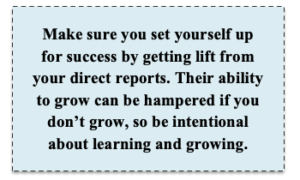Are Your Employees the Wind Beneath Your Wings or an Anchor Tied to Your Feet?
One of the keys to success as a leader is having the time to think strategically. If you want to devote more time to strategic analysis, your staff will likely have to step up their game, take on more responsibilities, and become more self-sufficient in their work. If you are their personal help desk, they won’t learn, and you won’t get the lift you need to devote time to higher-level work.
Lidia was a new manager with five direct reports. A few times an hour they’d reach out to her on Slack (her team’s communication platform) asking how to do things, how to prioritize their work, and what she thought of the work they had just completed. If she didn’t respond within 15 minutes, they’d reach out again asking for feedback. While Lidia wanted to be helpful, she had her own work to do, and their neediness was dragging her down.
I asked her what expectations she had set with them regarding meeting with her, setting their own work priorities, and getting feedback. She realized she had not set any. Then I asked what expectations her own manager had set with her. She explained that she met with her manager once a week for feedback and guidance, and to see whether there were any tasks she could take off her manager’s hands. I asked her whether she was offering to take on these tasks to provide lift for her manager or because her manager expected it. She realized she was taking the initiative on her own, not because her manager expected it, and she’d assumed her staff would do the same. Lidia provided her manager lift while Lidia’s staff anchored her to them.
When talking with leaders about improving their performance, I ask who on their team provides them lift and who pulls them down. Then we work on ways to achieve more lift and less drag. There are three main strategies to increase lift: set “lift expectations” for staff to add value beyond their assignments, offer support and training so that staff can learn and grow, and hire people who are eager to shoulder your tasks. Some leaders fear that in tasking a staff member with their work, the staffer may prove better at it than they are. I say that is a gift: you can only move up if there is someone who can take your place.
In setting expectations for lift, be clear with staff about how much autonomy they have in making decisions, completing and submitting work, and taking on new work. Make sure they know when they should check with you first, such as when submitting work to your boss. Expectations function like guardrails that give staff the ability to work with less direction, and communicating your confidence and trust in them is key to their becoming more self-reliant.
To enhance your team’s ability to provide lift, create a learning plan with each staff member. Discuss with them their skills and interests and explain which competencies are important to develop. Support their interest in attending training and participating in job rotations that will help them grow. Provide opportunities for them to make presentations and gain visibility with management. Leaders who help staff grow become “managers of choice” and rarely have trouble attracting staff.
For employees who drag you down, determine whether they lack the skill or the motivation to add value. If they lack the skills, are there ways they can acquire them or is it simply a bad job fit? If they aren’t motivated, is it because they don’t enjoy the job, or it doesn’t play to their skills? In these cases, document their performance while helping them move in a positive direction toward a job where they could be successful.



These are great articles!